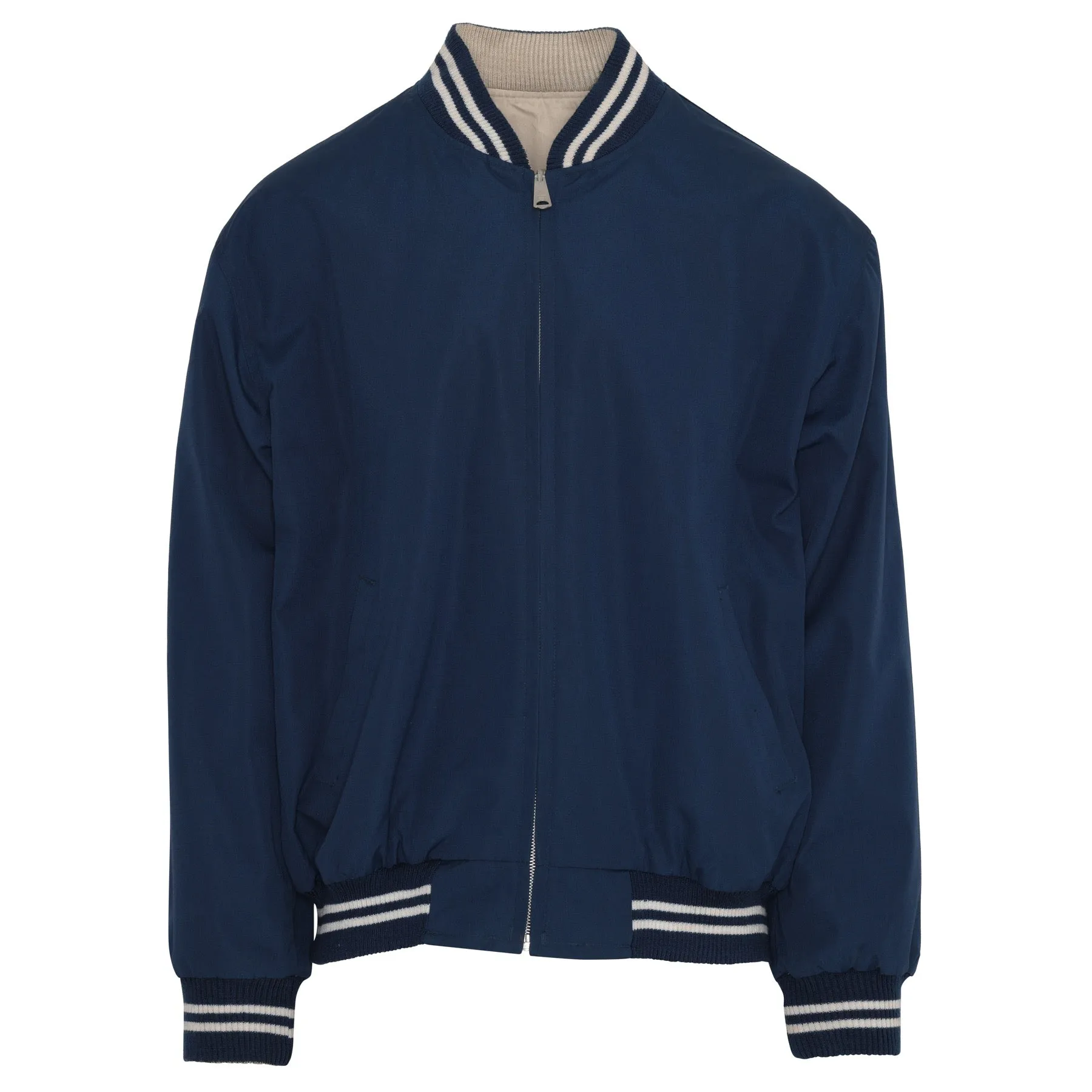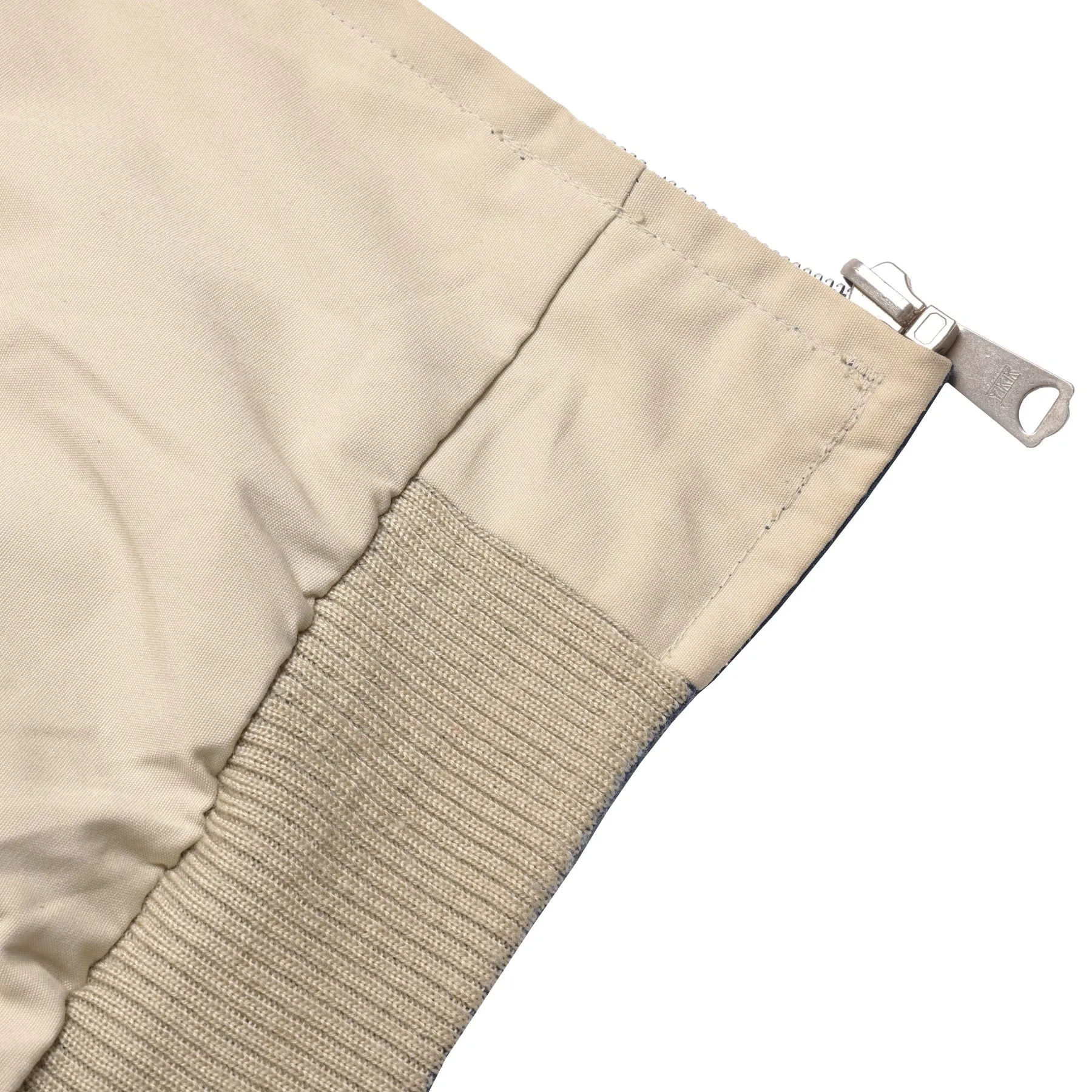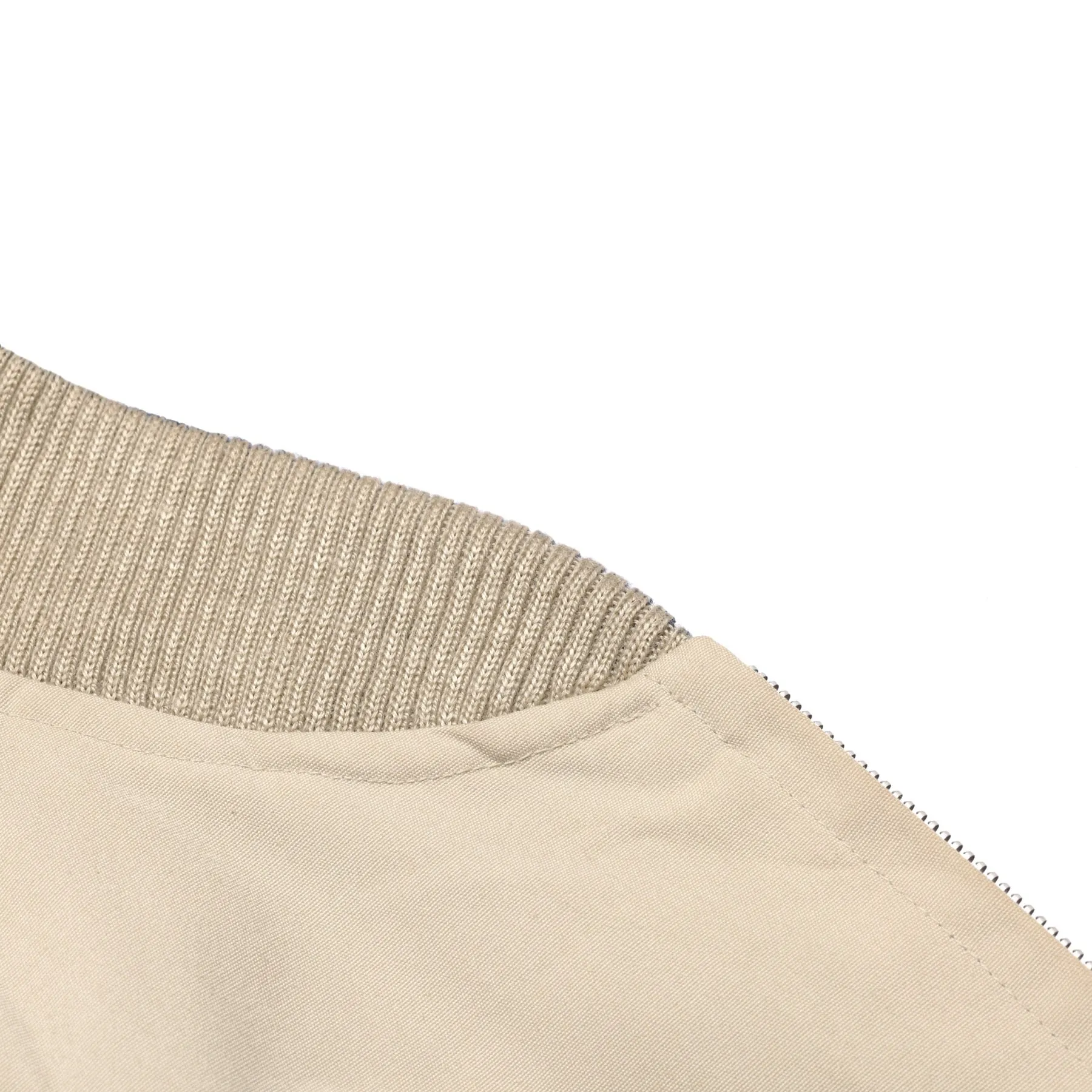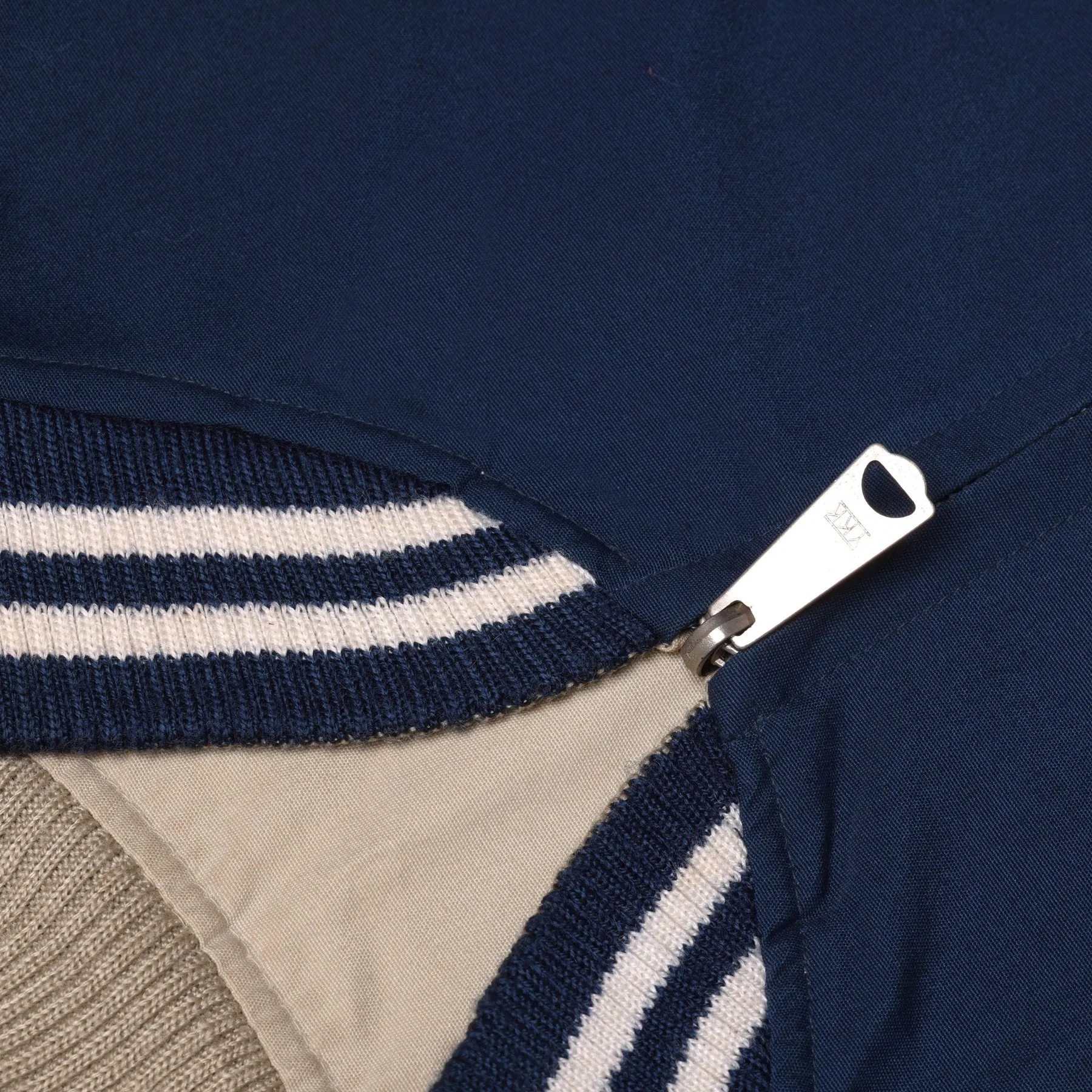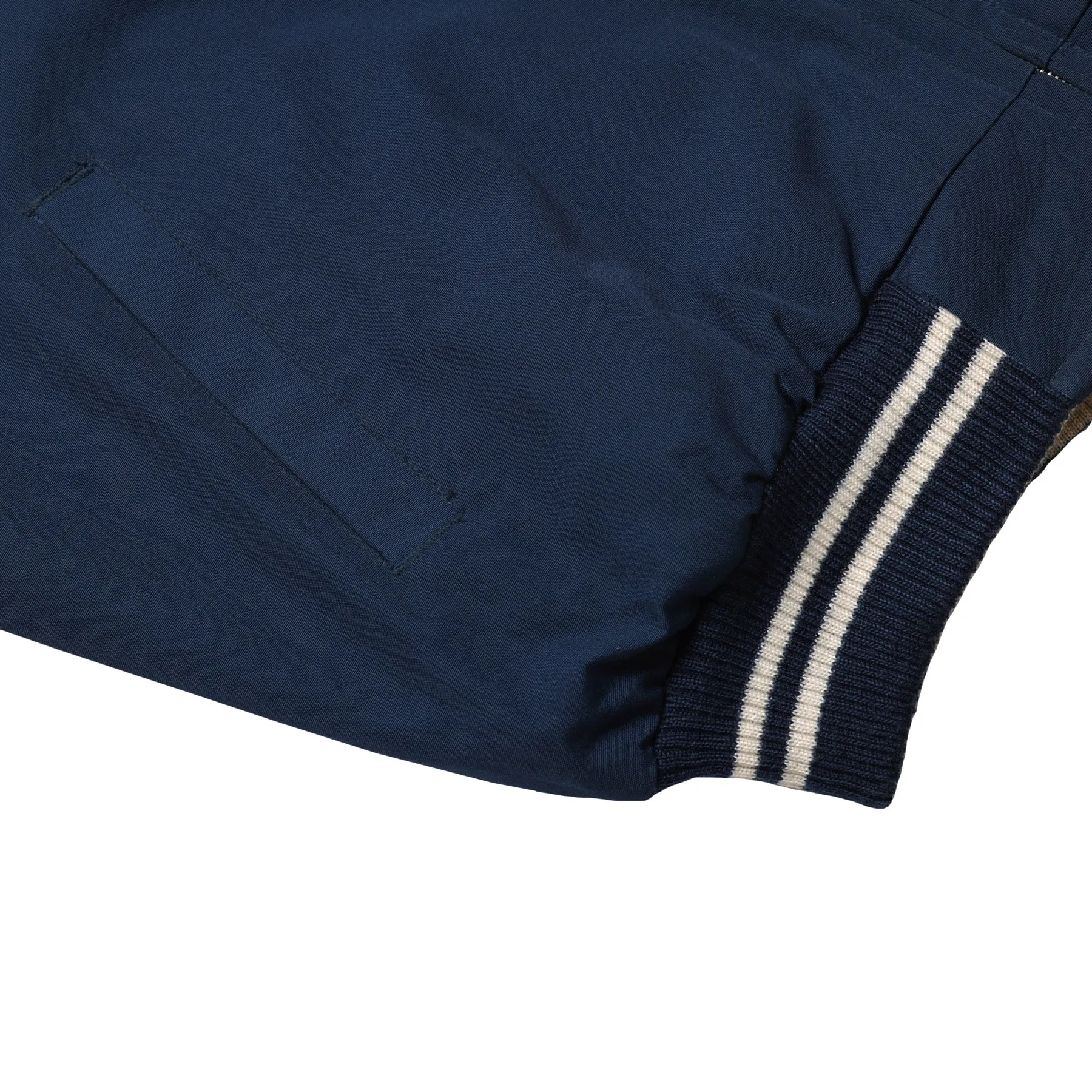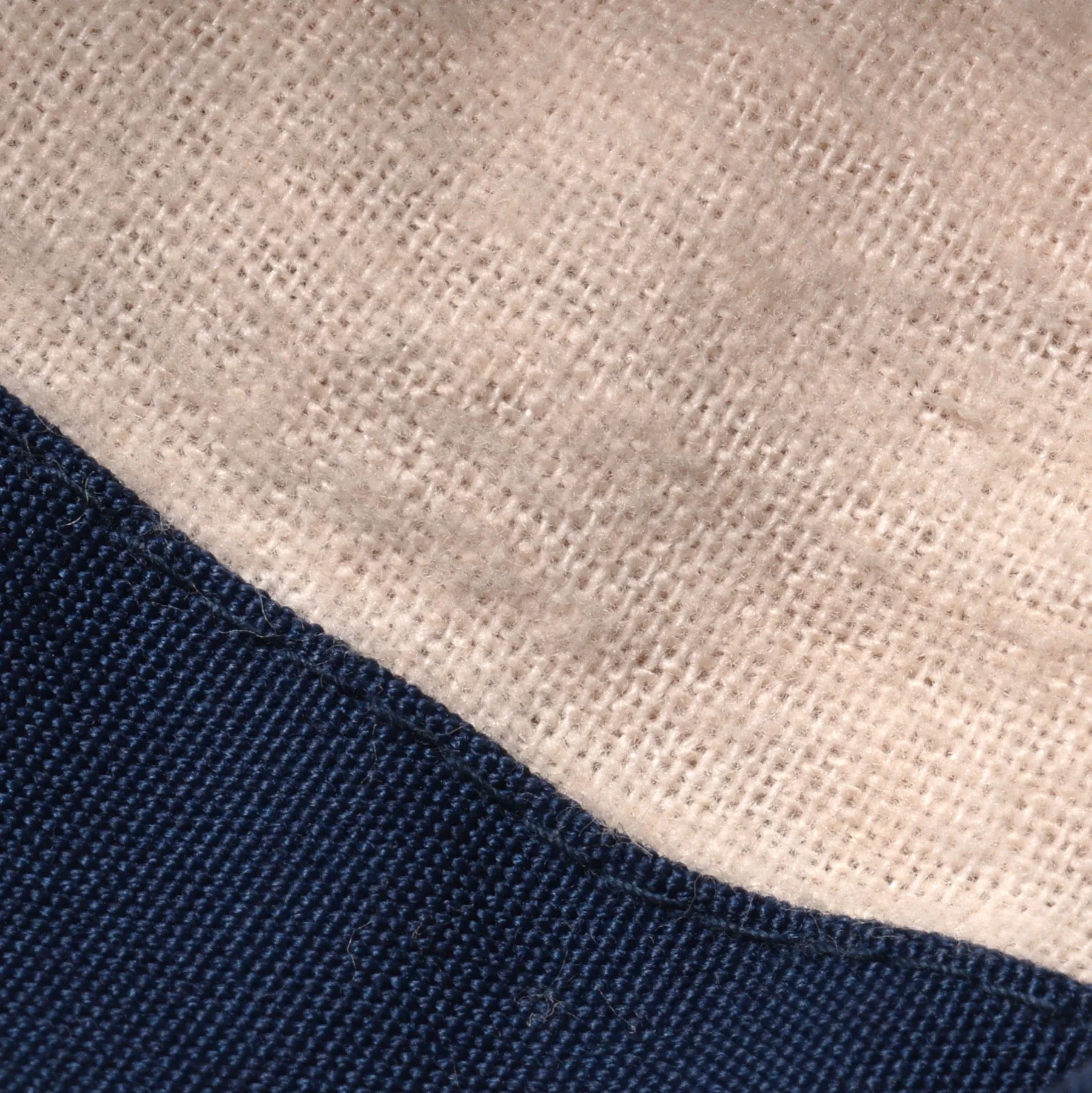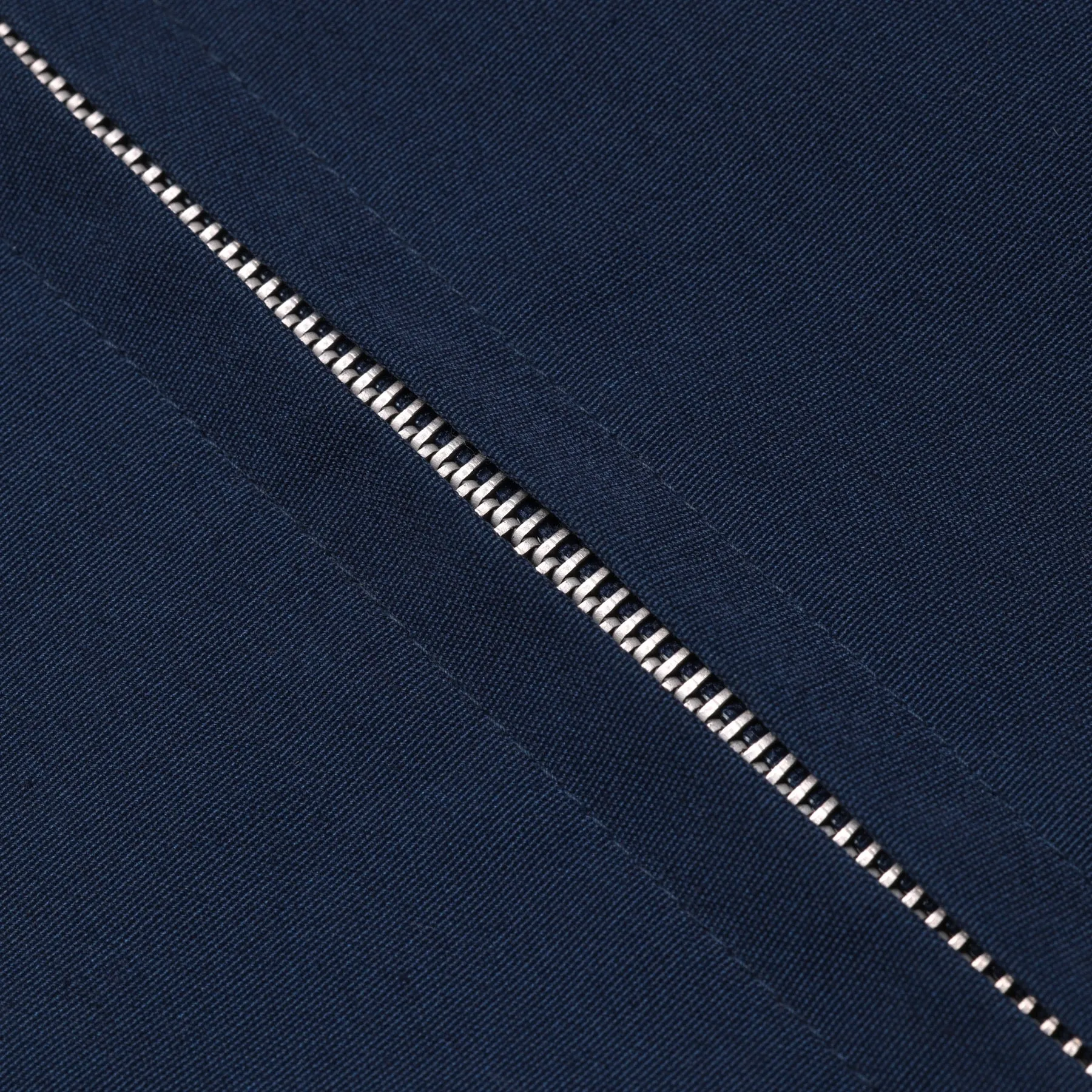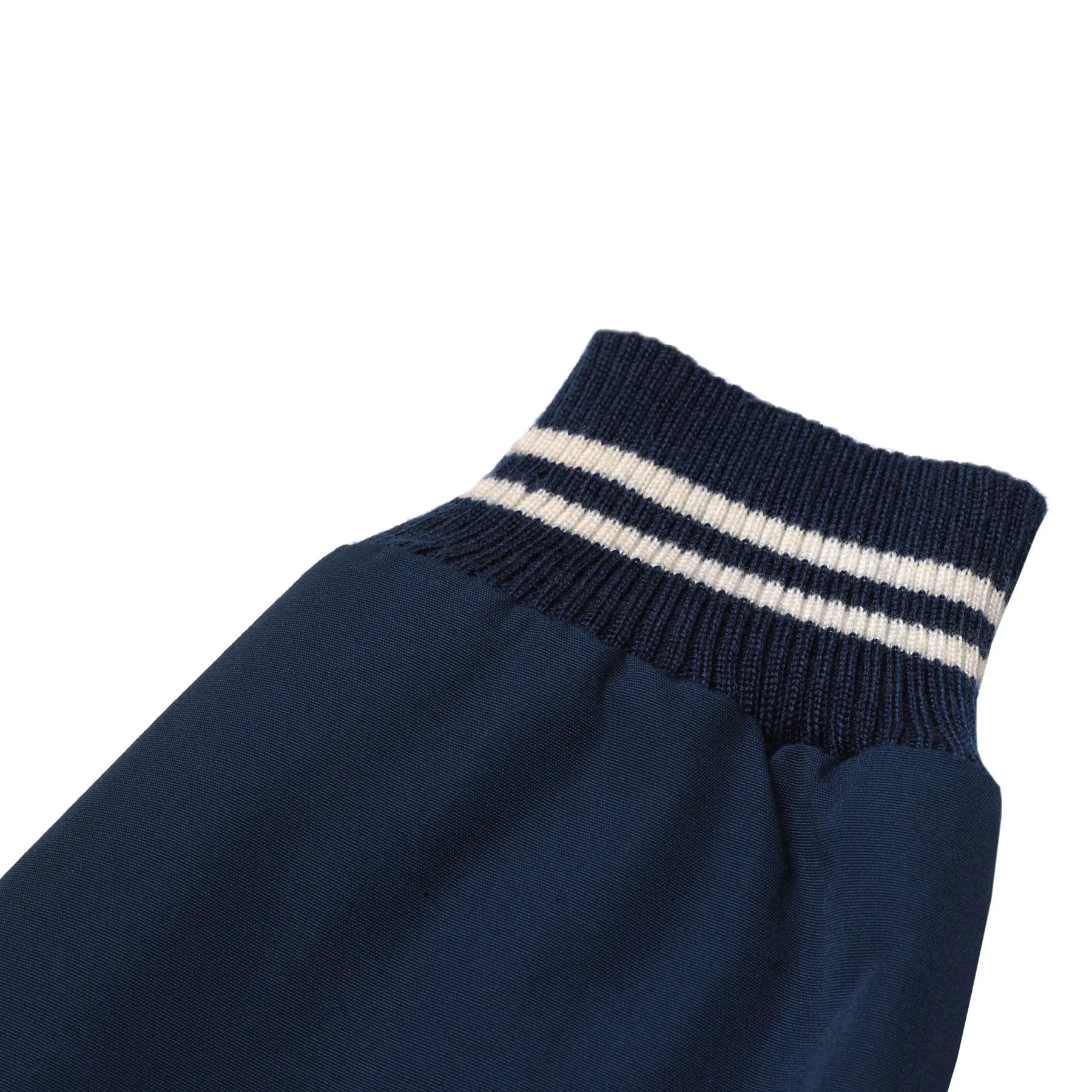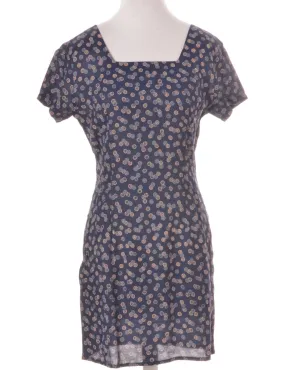Built with a clean-finish reversible system, the jacket integrates technical sportswear precision, duality of function, and muted athletic minimalism.
The unbranded jacket, while lacking a commercial signature, is almost certainly a product of late 1970s to early 1980s European mass-tailored casualwear, likely Nordic or Central European in origin based on its fabrication techniques and construction methods. This absence does not categorically prove the garment was not retail-ready, but suggests that it was a pre-market sample, an internal test piece, or an unfinished production run awaiting final consumer branding. The lack here points toward an internal technical prototype. The piece belongs to a broader postwar European technical sportswear lineage. Jackets like this were pivotal in establishing the foundations for modern athleisure and “weekend casual” dress codes, shaping the evolution of multi-purpose utility garments that bridged formal tailoring and emerging leisurewear, and ultimately influencing later streetwear silhouettes and technical casualwear hybrids. Classified as a reversible bomber jacket, the garment’s design intent emphasizes adaptability for transitional urban and recreational contexts. The navy outer face offers a polished, minimally sporty urban look, while the beige inner face reads as lighter, more athletic, and leisure-oriented. Ribbed cuffs, collar, and waistband provide visual and structural coherence across both modes, and the muted two-tone colorway enhances versatility. It is engineered to perform seamlessly across multiple settings, reflecting an early commitment to modularity in civilian clothing. The construction methodology employs a fully reversible, clean-finish approach. Seams are internally bound or self-faced, enabling either side to function as the external face without revealing raw edges. A two-way YKK metal zipper with dual pullers anchors the garment, installed with symmetrical reinforcement to withstand mechanical stress from frequent reversals. The navy face is made from a high-density twill weave, likely a cotton-polyester blend engineered for moderate wind resistance and abrasion durability, while the beige side utilizes a loopback jersey or terry-backed twill, providing a softer, thermally responsive internal texture for enhanced comfort against the skin. Key technical details include striped rib knitting at the collar, cuffs, and hem, offering both functional compression and retro-athletic visual anchors; inseam welt pockets on both sides, bar-tacked at stress points for reinforcement; double topstitching along all major structural seams to optimize strength and maintain flexibility; and an internal zipper guard to prevent snagging and extend garment lifespan. Precision in twin needlework and stripe alignment is notably high, reflecting a disciplined industrial-level craftsmanship standard. Stylistically, the jacket aligns with the bomber jacket typology evolved from mid-century MA-1 flight jackets but adapted into civilian leisurewear during the 1970s–80s. Its reversible functionality reflects European modular innovations of the era, embodying a post-military utilitarian ethos that found expression in emerging casual fashion, anticipating later influences on varsity jackets, sports bombers, and hybrid technical outerwear. The navy side’s shell fabric—a high-density cotton-polyester plain weave—exhibits a smooth, matte surface with strong wind and abrasion resistance, critical for active or casual use. The ribbed trims, executed in a 1x1 rib knit structure at a gauge of approximately 8–10 GG, ensure high elasticity and dimensional stability, with white striping subtly referencing varsity jacket traditions while remaining understated. The beige side’s brushed, twill-backed jersey offers mild insulation without excessive weight, preserving breathability and layering ease. Comparatively, the material philosophy echoes mid-century coated cotton poplins, shell poplins, lightweight workwear drills, and early nylon-cotton blend technical shells. Textile mills such as Olmetex, British Millerain, Klopman International, and Toray Industries produced similar fabrics, balancing traditional natural fiber aesthetics with emerging technical demands for casual outerwear. Structurally, the jacket employs a streamlined panel configuration optimized for reversibility: two-piece front body, two-piece back body with minimized darts, and one-piece raglan sleeves extending from neckline to side seam to maximize mobility and eliminate shoulder seams that could disrupt the reversible functionality. The neckline is finished with a slightly elevated ribbed band collar, precisely transitioned at center front to integrate cleanly with the zipper. The cuffs and waistband feature significant negative ease, enabling the ribbing to subtly gather the body into the characteristic bomber silhouette. Assembly methods demonstrate efficient, high-quality industrial practices: the zipper is inserted with a single-fold facing technique and edge topstitched for stability; ribbed trims are attached using overlock stitching combined with external or internal topstitching to secure knit-woven junctions; welt pockets are constructed via internal pocket bags with reinforced box tacking at openings. Sleeve and body panels are joined flat, and side seams closed in a continuous run, maximizing strength and production efficiency. The lining is bagged at hem and cuffs, ensuring a clean internal finish with no exposed seam allowances. Seam finishes throughout are pragmatic yet refined: overlocked internal seams for durability, tightly edge-stitched zipper insertions to prevent tape slippage, and precisely reinforced ribbing attachments to preserve long-term elasticity and silhouette integrity. Reinforcements include discrete bar tacks at pocket mouths, base zipper bartacks, and neckline staystitching to stabilize woven edges before rib insertion. Technically, the jacket’s execution is exemplary within its industrial category: tension control at stress points such as zipper seams and pocket openings is precise, eliminating distortion; twin needle stitching remains consistently spaced; rib attachments maintain clean elasticity without warping. The overall result is a clean, flexible, and durable garment, demonstrative of a mid-to-high-grade production tier characteristic of serious sportswear manufacturers. The collar—a varsity-style ribbed bomber collar—is low-profile but rotationally stable, engineered to avoid stretch distortion over time. Sleeves are cut with moderate ergonomic curvature, enhancing movement without requiring articulated tailoring. Seams are reversible-overlocked and topstitched, preserving chafe-free, clean edges regardless of which face is worn outward. Edge finishing is rigorously clean: hems, cuffs, and neckline transitions are uniformly treated to maintain silhouette tension and maximize reversibility. Internal construction details are concealed or minimized to preserve the integrity of both faces. Ribbed bands unify the jacket’s compression zones across both configurations, reinforcing its visual and structural coherence. Conceptually, the garment embraces the postwar democratization of clothing design: versatility, pragmatic adaptability, and aesthetic restraint over ornamental flourish. Psychologically, it empowers the wearer to shift easily between urban discretion (navy) and casual sportiness (beige), reflecting the emerging late-20th-century emphasis on self-presentation fluidity without material excess. It offers practical identity modulation at a time when casualwear increasingly replaced formalwear in the social mainstream. Artistically, the jacket channels post-utilitarian modernism: functionality elevated to aesthetic principle, structural honesty, and restrained, minimally playful visual cues (via striped ribs). It operates within a lineage descending from Bauhaus principles but interpreted through mid-century athleticwear, anticipating later evolutions in streetwear and technical casualwear design. Historically, its fabrication techniques, colorways, rib detailing, and modular construction date the piece securely to the late 1970s to early 1980s, capturing the transitional moment when postwar tailoring logic fused with emerging global sportswear codes—a foundation for today’s technical casualwear and hybridized fashion sectors. Contemporarily, the jacket maintains strong relevance within archival streetwear movements, technical casualwear revivalism, and heritage vintage styling. Brands such as Visvim, Engineered Garments, and Needles reinterpret similar modular, heritage-driven pieces. Its honesty of construction, minimalistic athletic coding, and pragmatic engineering position it favorably within current markets emphasizing archival authenticity, sustainable multi-functionality, and culturally resonant casualwear. Ultimately, this reversible bomber jacket exemplifies highly disciplined technical construction, multi-contextual design logic, and stylistic restraint. Its duality of function and clarity of execution make it both a valuable historical artifact and a commercially viable garment for modern consumers seeking substance, adaptability, and quiet technical sophistication in everyday outerwear.
Measurements (cm):
Chest: 67
Length: 70
Shoulder: 56
Sleeve: 65
Size Conversion (approximate)
US Men’s Size: L-XL
EU Men’s Size: 50-52
SKU: 015053




